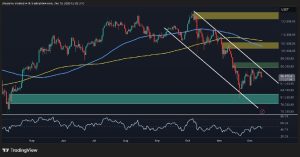The seemingly innocuous world of children’s toys recently experienced a whirlwind of online attention and debate, all stemming from an unexpected source: a plush octopus sold at the popular discount grocery chain, Aldi. What began as an innocent social media post quickly spiraled into a viral sensation, showcasing the power of online communities to dissect, interpret, and ultimately amplify even the most minute details of everyday life. The incident underscores the ever-present scrutiny facing retailers, particularly when it comes to products designed for children, and highlights the delicate balance companies must strike between affordability, creativity, and adherence to societal expectations.
The catalyst for the viral storm was a photograph shared on a popular Facebook group dedicated to Aldi finds and deals. The image featured a cuddly, purple octopus plush toy, seemingly a charming and age-appropriate plaything. However, one observant shopper noticed a peculiar detail: the placement of one of the octopus’s tentacles, which, due to its position and shape, bore an uncanny resemblance to male genitalia. This seemingly accidental yet undeniably suggestive design element immediately caught the attention of other group members, sparking a flurry of comments ranging from amused disbelief to expressions of outrage. The photo quickly gained traction, spreading beyond the confines of the initial Facebook group and making its way onto other social media platforms, further amplifying the discussion.
The ensuing online discourse reflected a diverse spectrum of opinions and reactions. Some users found the design flaw humorous, viewing it as an unintentional comedic gaffe and sharing lighthearted jokes about the unfortunate placement. Others adopted a more critical stance, expressing concern over the potential impact of such imagery on young children and questioning Aldi’s quality control processes. A subset of commentators dismissed the controversy altogether, arguing that the perceived resemblance was a product of overactive imaginations and that the focus should remain on the toy’s overall play value. Regardless of individual perspectives, the viral nature of the incident demonstrated the speed and ease with which online communities can mobilize around shared observations, transforming a seemingly mundane product into a subject of widespread discussion and debate.
The Aldi octopus incident exemplifies the challenges faced by retailers in an era of heightened social media scrutiny. In today’s interconnected digital landscape, even the smallest design oversight can be rapidly amplified and dissected by online communities, potentially leading to reputational damage and financial repercussions. Companies must navigate a complex landscape, balancing the need for cost-effective production with the imperative to avoid design elements that could be perceived as offensive, inappropriate, or potentially harmful. This tightrope walk requires meticulous attention to detail during the design and production process, as well as proactive strategies for addressing potential controversies should they arise.
Beyond the immediate implications for Aldi, the viral octopus saga raises broader questions about the evolving nature of consumer culture and the influence of social media on public discourse. The incident demonstrates the power of online platforms to shape perceptions, amplify narratives, and hold companies accountable for their products and practices. It also highlights the increasingly blurred lines between public and private spheres, as everyday consumer experiences are readily shared and dissected in online forums. In this context, companies must be prepared to engage with consumers in a transparent and responsive manner, acknowledging concerns and taking appropriate action to address potential issues.
The story of the Aldi octopus toy serves as a cautionary tale for retailers and a fascinating case study in the dynamics of online communication. What began as an innocuous product intended for children inadvertently became a focal point for a wide-ranging discussion on design, censorship, and the power of social media. The incident underscored the importance of meticulous quality control in the age of viral scrutiny, while simultaneously highlighting the unpredictable nature of online trends and the ever-present potential for seemingly minor details to capture the collective imagination of the digital world. As social media continues to shape consumer behavior and influence public discourse, retailers must remain vigilant, adapting their strategies to navigate the complex and ever-evolving landscape of online engagement.














